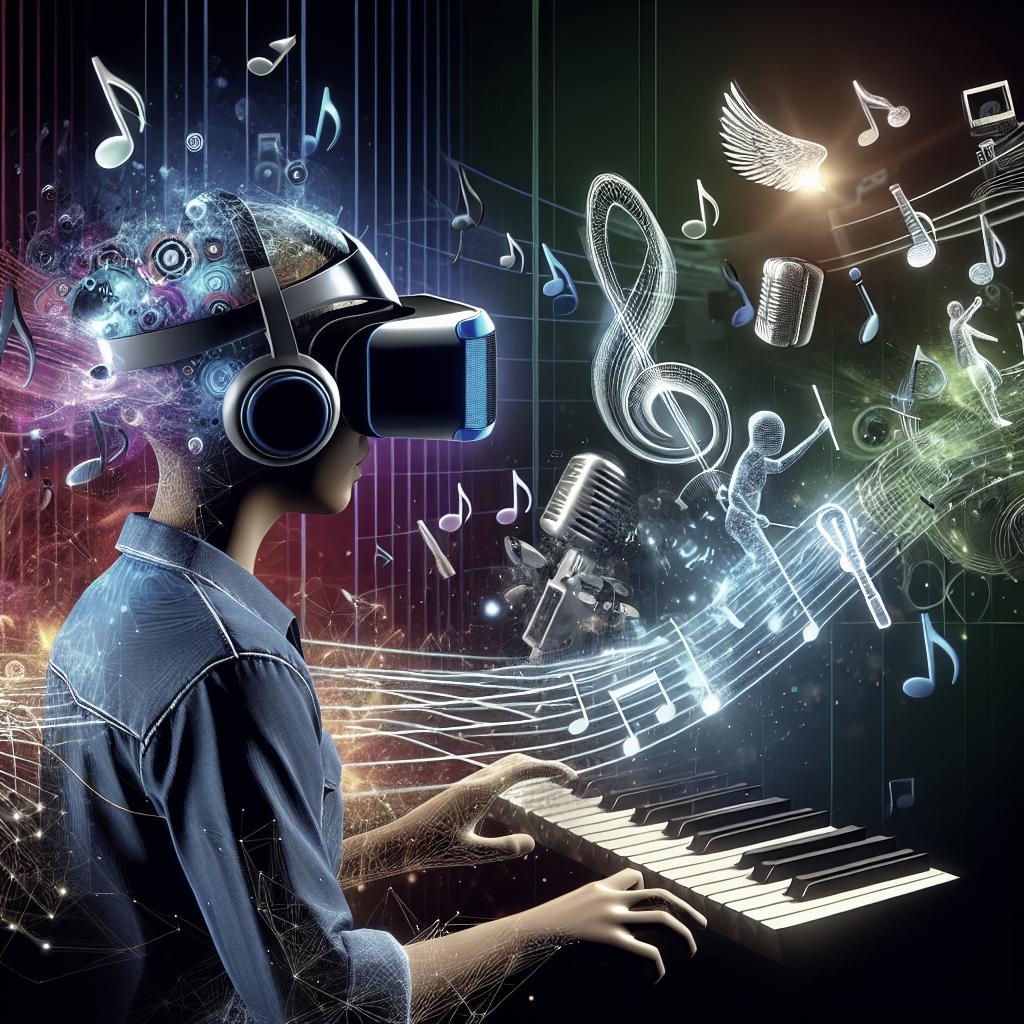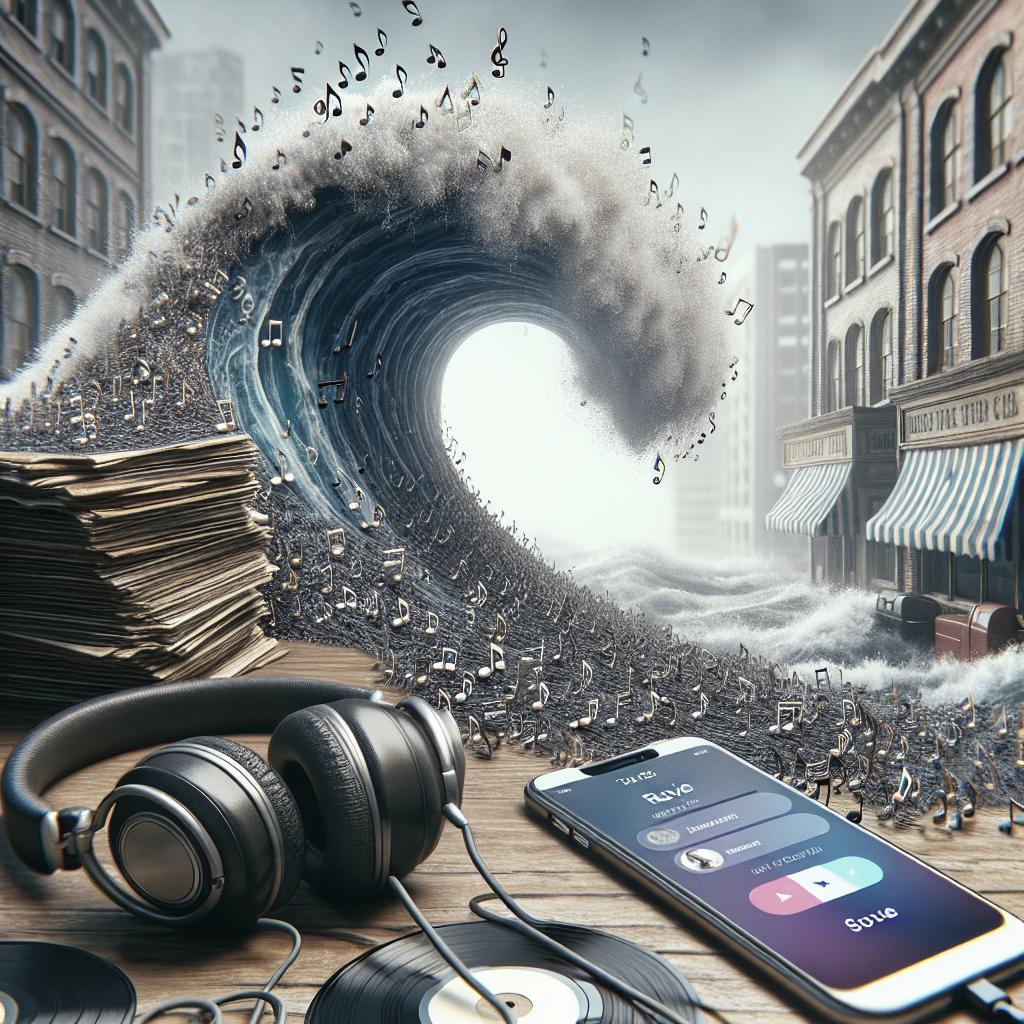“`html
How to Use Virtual Reality in Music Experiences
Virtual Reality (VR) and Augmented Reality (AR) have revolutionized the entertainment industry, with music experiences being one of the greatest benefactors. This blog delves into the transformative impact of VR and AR in the music realm, covering everything from immersive videos to music-specific applications, and the tools used for these experiences. We will explore the potential of VR beyond traditional methods, addressing common concerns, and end with practical steps to integrate these technologies for personal or professional applications. This comprehensive guide is tailored for enthusiasts and professionals eager to embrace the future of music and technology.
So what are VR and AR?
Virtual Reality (VR) is a fully immersive digital environment that can simulate the real world or create entirely new landscapes to explore. Users typically engage with a VR environment through headsets that provide a 360-degree field of view, combined with audio feedback and sometimes even haptic responses. Augmented Reality (AR), on the other hand, overlays digital information onto the physical world, often through the use of smartphones or specially designed glasses. While VR creates a whole new world, AR adds to the existing world.
Both technologies have found their niches in the entertainment industry, especially in music. They offer dynamic ways to engage with music, whether by creating virtual concert experiences or augmenting live events with additional content. Understanding the basic concepts of VR and AR is essential for musicians and creators who want to leverage these tools to connect with audiences in new and innovative ways.
Immersive videos
Immersive videos take music experiences to another level by allowing viewers to be ‘inside’ the video. This type of content provides a more engaging experience than traditional music videos, enabling fans to explore different scenes within a music video just by turning their heads. The use of 360-degree cameras and interactive graphics makes it possible to fully engage audiences, providing them a role within the story.
Many artists have adopted immersive videos to offer fans a new perspective on their music. From concert live streams to narrative-driven music videos, the potential for creativity is unlimited. Such immersive experiences also allow higher fan interaction, as fans choose how they engage with the material, hence creating a deeper connection with the artist.
Music-specific applications
VR and AR technologies have spawned a range of music-specific applications that have changed how music is created, consumed, and even taught. Virtual recording studios allow artists to collaborate with others across the globe in a shared virtual space, creating music without the constraints of geography or physical space. These virtual environments provide musicians with the tools and accessories needed to compose and produce music without leaving their homes.
In addition to production, these technologies have influenced music education. Visualization tools in VR can represent musical theory and compositions in interesting ways, helping learners understand complex concepts while actively engaging in a virtual setting. This hands-on application is a testament to how VR and AR can potentially revolutionize traditional learning methods and empower musicians in unprecedented ways.
Working with VR headsets
Using VR headsets is one of the most effective ways to experience virtual reality music events, providing a fully immersive auditory and visual experience. Companies like Oculus, HTC Vive, and Sony PlayStation offer a range of headsets suitable for different budgets and requirements. These headsets allow users to attend virtual concerts, explore interactive music videos, or collaborate with other musicians in a virtual studio.
While headsets offer a fantastic immersive experience, adopting these tools can present unique challenges, from setup to ease of use. It requires some technological literacy to optimize VR settings for the best experience. However, once accustomed, the potential interaction and engagement with music become limitless, pushing the boundaries of what’s possible for music fans and professionals alike.
The elephant in the room
Despite the transformational potential of VR and AR in music, several concerns hold widespread adoption back. One of the primary issues is the cost of hardware, which can be prohibitive for many users. While prices have decreased over the years, a quality VR setup still represents a significant investment compared to traditional methods of music consumption.
Furthermore, there are concerns about accessibility and technological literacy, as not everyone is versed or comfortable with using VR equipment. Breakthroughs are being made to make these technologies more user-friendly, but it remains a barrier for some demographics. These challenges need to be addressed proactively by technology creators and music professionals to expand their audience base and ensure inclusivity.
Final thoughts
The future of music is undoubtedly intertwined with the advancements in VR and AR technology. Artists and creators who are willing to venture into this space will find myriad opportunities to connect with their audiences in more meaningful and interactive ways than ever before. As barriers diminish and technology evolves, the integration of VR and AR into music experiences will likely become commonplace, setting the stage for a new era of creativity and fan engagement.
For those ready to embrace this change, the focus should be on experimentation and continual learning. By keeping up-to-date with the latest technologies and trends, artists can stay ahead in this evolving landscape and take full advantage of the potential these tools offer. The exploration of virtual reality in music is only just beginning, promising a tremendous shift in how music is consumed and experienced globally.
Written by WiNSS Scholars Matt DeCesare & Homer Wang.
| Section | Key Points |
|---|---|
| So What Are VR and AR? | Definitions and differences between VR and AR; applications in music. |
| Immersive Videos | Uses of 360-degree videos in music; enhancing fan engagement. |
| Music-Specific Applications | VR in production and education; new collaboration possibilities. |
| Working with VR Headsets | VR headsets for immersive music experiences; challenges in adoption. |
| The Elephant in the Room | Concerns about cost, accessibility, and inclusivity in VR technology. |
| Final Thoughts | Future integration of VR and AR in music; emphasis on experimentation and learning. |
“` This HTML-formatted blog post explores the role of virtual reality in enhancing music experiences. It outlines how VR and AR technologies are revolutionizing music through immersive videos, specific applications, VR headsets, and more, while acknowledging challenges and highlighting future opportunities.

